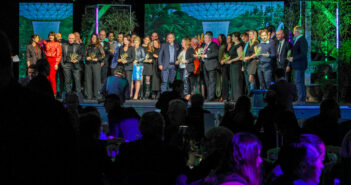An exclusive report produced by LDP, in partnership with A Different View and Panelbase, outlines the opportunities for leisure within retail destinations as consumers return to retail and leisure locations and new work patterns are established.
Placemaking in the new normal: Reinvigorating destinations through experiences and partnerships asks what the future looks like and what key issues should be considered in short-term and long-term planning.
The paper explores: What is the new normal? How will consumer patterns shift? And looks at the key elements to consider based on primary research: what should mall developers and city centres focus on to draw people back? How should they strategise this? What are the new types of investment that could do this?
The report also includes examples and case studies of successful ventures involving entertainment and leisure, looking at how they were structured and what lessons can be learned.
Lockdowns change work and leisure behaviour
The lockdowns of 2020 and 2021 necessarily saw a dramatic shift, with many office-based employees working partly or exclusively from home. One of the key questions that individuals, companies and policy makers are asking themselves is whether this is the new status quo or whether workers will gradually go back to pre-COVID behaviours.
The reality appears far less clear. Even if commuters do return to offices, it seems likely that it will be on a flexible basis, which will reduce overall commuter footfall. The impact on city centres could be stark. Fewer commuters means potentially less demand for office space and less secondary spend for the lunchtime and night-time economies.
While less office space is helpful for companies looking to cut overheads, it is likely to lead to a surplus of commercial office space in city centres. The impact of less secondary spend will lead to less demand for retail and dining. For retail in particular, the fall in footfall will be compounded by the acceleration of online sales over the past year, which will further damage demand for the high street.
Contrary to the impact on major commercial and urban centres, there may be increased demand and footfall in satellite towns and cities as people stay closer to home to shop, dine and seek entertainment. This trend won’t just impact traditional high streets but shopping centres as well.
The question for policy makers and indeed shopping centre owners and operators is how to bring people back to the city centres or malls, fill vacant property space and reshape these environments.
Residential, retail and leisure
LDP says in the report – Placemaking in the new normal: Reinvigorating destinations through experiences and partnerships – that it expects residential property will feature quite heavily in absorbing some of the office and retail space in city centres. The long-term structural undersupply of housing across the UK means there is plenty of pent up demand for all types of housing.
This is not the sole solution though. More residential units will bring a greater volume of local residents looking for leisure, and successful city centres will still need to attract visitors from both local and regional markets. LDP, in conjunction with A Different View and Panelbase, conducted a survey of UK residents on their past and forecast consumer behaviour. Some key highlights from this survey are included in this exclusive report.
LDP concludes that if leisure and entertainment are to become important components of the future of city centres, it is important to understand which kind of leisure uses are successful in these kinds of settings. Larger scale attractions such as theme parks, zoos and waterparks are too land hungry to realistically be included as part of a city centre strategy. Cinemas are already well established in city centres and shopping malls and have very strong synergies with dining in particular.
Clustering attractions that target different groups and demographics could also be beneficial. These wide-ranging attractions would drive footfall during the day, evening and night and would support adjacent shops, bars and restaurants and represent one way of reinvigorating destinations.
To see the full results of the survey and how the future of retail, leisure and entertainment may develop:
This report is for MAPIC Full Access Pass or MAPIC Digital Pass holders only
- You are already registered ? Access to the report by clicking this link.
- Not yet registered ? Please register to MAPIC Full Pass or MAPIC Digital Pass to read this full report https://www.mapic.com/en-gb/register.html
Your pass will also give you access to our two upcoming online conference sessions and networking events :
- Meet the Leisure Operators! (online premium networking event) on 13 October 2021 – 15.00-16.00 CEST
- Culture, art & entertainment as means of reawakening places (online open session) on 14 October 2021 – 15.00-16.00 CEST





